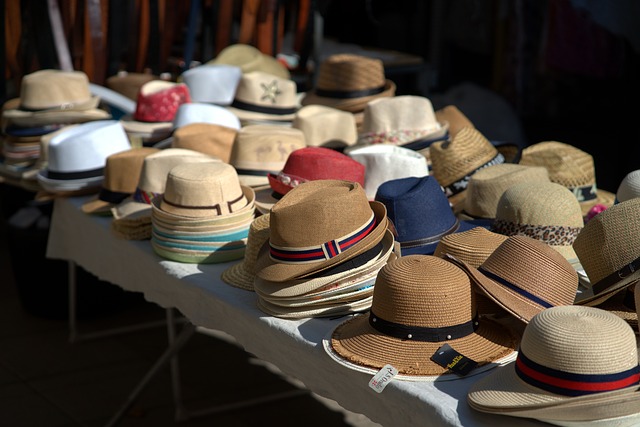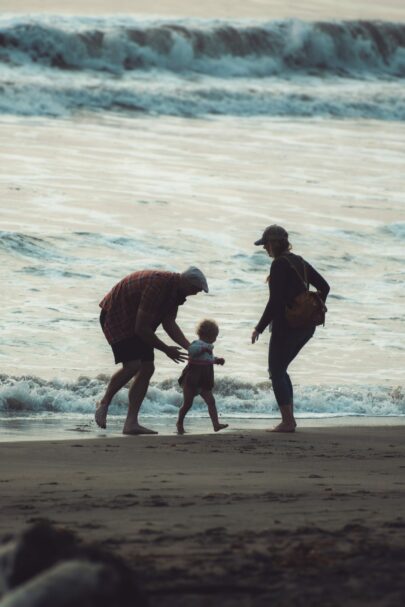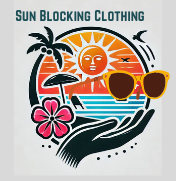How To Choose Sun Blocking Clothing For Yourself is an ongoing learning curve. Do you know how to choose this important part of your wardrobe for yourself?

How to choose sun blocking clothing for yourself is more important for protecting your skin than I thought. Do you know where to start? Dermatologists recommend starting with the following basic items:
- A wide-brimmed hat. At least a 3 inch brim to protect your face, ears, neck and nose. These are frequent skin cancer locations, indicating a number of exposures. The straw or fabric of the hat must be tightly woven to keep out even pinpricks of light.
- Lightweight and long-sleeved shirts and pants that are loose fitting and allow for air circulation. It’s important to cover up as much of your skin as possible to protect you when spending time outdoors. Tightly woven fabrics are neccessary to protect your skin.
- Sunglasses with UV protection. Large lens or wrap around styles protect more of the area surrounding your eyes. This can help with fineline wrinkle protection.
- Shoes that cover your feet, not just strappy flip-flops. Real shoes to keep the sun off the skin of your foot. Walking about on hot surfaces will be safer if you have shoes. You would not allow your kids to burn their feet by walking on hot cement or sand. Protect yourself.
- Remember, sunscreen on your hands and any parts not covered by clothing. Keep yourself safe from the sun.
Sun Blocking Clothing Or Regular?
Your regular clothes can help protect your skin from the sun. The idea I am trying to share is that something is better than nothing. Wear your regular clothes to help you stay safe.
The clothes already in your closet can provide different levels of UV protection. The things you already own will help as you choose sun blocking clothing for yourself.
Your long-sleeved shirts, long pants, or long skirts will cover the most skin and offer the most protection. Darker colors usually are more protective, more protection for your skin than light colors. Looser fitting shirts and pants are better in the heat. They will allow for air to flow through and help keep you cool.
Remember, when you hold the garment up to the sun, if you can see even a pinprick of sunlight, the sun will get through to you. The issue here is that you are not actually blocking all the suns’ rays from your skin. You may not get burned, but the sunlight will after a while begin to do some damage.
So while you do get some protection from regular clothing, choose the ones that will protect you the most.
Stay aware of how long you have been in the sun, take breaks in the shade and enjoy some time in the sun. 7 Tips For Safe Sun Fun
UPF Rated Clothing
Chose clothing that has been designed for sun protection, then tested to make sure of its Ultraviolet Protection Factor. (UPF) This will give you greater control over your total level of UV exposure.
Let’s talk about who can benefit from wearing this UPF clothing.
When trying to decide if you or your family need special clothing for skin protection consider:
- Are you in the higher risk group for sun damage to your skin? https://www.cdc.gov/niosh/topics/sunexposure/sunburn.html#
- Will you be spending longer hours in the sun, especially during peak hours from 10 AM till 4 PM? You will need more coverage than if you are staying in at that time.
- Do you have allergies or other immune challenges that will make your skin more vernable in the sun?
- Are you active and in and out of the water a lot on most days. Wet clothing will have less sun protection factors, even in special UPF clothing.
- Have you been wearing items that are too tight? If the fabric is stretched to tightly it will not offer the sun protection it should, even specially treated UPF clothing. Some items may need to be replaced.
- Are you taking antibotics? Some pain relivers, blood thinners and other medications can affect your sun risk. Check medication information sheets. Be safe rather than sorry.
Read Lables On Your UPF Clothing
If you remember nothing else about this 3 letter code, UPF, consider this:
Check the label on any item you are considering. Any rating under 30 is not going to offer enough protection to really help you.
The higher the number the better. Right now with the rating system we use, 50 is the highest. Any higher number is probably a sales ploy. Check labels.
Another reason to check the label is for care directions. To keep your UPF garment in a good condition to protect your skin, care for it properly. Some labels will tell you that this garment shouldn’t be used in chlorine water, or saltwater or whatever special care is recommended. Some can go in the dryer, some should be line dried.
Read labels.
Who Can Benefit from UPF Clothing?
As I am learning more about who can benefit from UPF clothing, my opinion is changing. I do think this specially manufactured clothing is an important part of a skin protection plan for anyone.
First of all, I had to reach a place that made the expense a worthwhile one. Like any special clothing, it is more expensive. So here are my suggestions to help guide you in your UPF clothing shopping.
UPF swimsuits are not important in my plan. I rarely blister (turn red) or sunburn in the areas my swimsuit covers. I do not spend time in the sun in my swimsuit without a cover-up. So that is not on my list.
A rash guard or long sleeved swim tee for when we might be in the water during the hotter hours (10 AM to 4 PM). Not on schedule at this time.
Actually, for myself, a long sleeved loose fitting shirt would be fun in a lighter color if it were a UPF fabric. I have some denim and black that work great for yard work, or other times I am out.
However a “prettier” one would be fun for vacations or summertime baseball or football games. I don’t actually plan to be out in the heat too much. Unfortunately, staying in is safer at this time for us.
UPF Clothing For Your Family
When planning for a family, I do think that UPF shirts would offer a better way to protect your skin if any of you are out for regular playtimes. Some shirts are woven to be cooler to wear and some even have wicking abilities to keep the adults and kids comfortable.
Your family members must be comfortable to get their cooperation in staying safe. If they are not comfortable they are not as willing to wear the shirts. This is important. http://Sun Block shirts
The shirt will not protect a body when it is not being worn!
Shirts are also powerful skin protection during cooler times of the year when the sun is out and bright, but the temperature is cooler. So, this is a part of taking care of yourself and your family that you need to think through. Making the most of your clothing dollar is important.
Reminder Of How UPF Ratings Work
UPF is the rating system we use for clothing.
Similar to SPF (Sun Protection Factor), for sunscreen products. SPF pertains only to a sunscreen’s protection from UVB rays, which is the more damaging type of light. Remember that the wide spectrum rating is also important for sunscreens.
UPF rates fabric’s effectiveness at filtering both ultraviolet A (UVA) and ultraviolet B (UVB) light.
When you shop: Look for a higher UPF rating number.
A UPF rating of 30 indicates the fabric of a garment will allow 1/30th (roughly 3 per cent) UV radiation to pass through it.
With a garment rated UPF 50, this equates to only 1/50th (roughly 2 per cent) UV transmission. Fabric allowing less than 2 per cent UV transmission will have a label of UPF 50+.
Fabrics rated below UPF 15 are not considered UV-protective.

How To Choose Sun Blocking Clothing For Yourself? Do You Know?
As a shopper, simply look for the UPF rating on garment hangtags or labels. Clothing makers will already have rated for these things:
- Dense, tight construction minimizes the amount of UV light that can pass through. Other construction details being equal, thicker fabrics may have reduced UV transmission versus thinner ones.
- Darker colors absorb more rays overall, including UV rays. Within the same color, darker hues protect better than paler ones.
- Chemicals and dyes that are effective at absorbing UV light can be added to improve UPF capabilities.
- Polyester does an excellent job at stopping UV light. So does nylon. Wool and silk are only moderately effective. Cotton, rayon, flax and hemp fabrics often score low without added treatments.
Other Conditions To Pay Attention To With UPF Items
- For many types of materials, being wet can cause a significant reduction in a fabric’s UPF rating.
- As your fabric becomes worn or faded, it also becomes less effective at blocking out the UV light.
- Stretched fabric can lose a significant amount of its UPF ability. Replace items that simply fit too tight.
How Will Laundering Affect Your UPF Ratings?
Washing your clothing can either increase or decrease its UPF, depending on several factors:
- Detergents with brighteners can make a difference.
- Most detergents contain them and most brighteners do improve UPF, there’s no way to tell for certain if a given detergent will enhance your garment’s rating or make it worse.
- Shrinking a garment usually gives it a tighter weave. This can increase its UPF, unless the shrinking makes the garment to small for you.
- Finishes speficially for adding UPH to a garment can vary in durability. If a finish washes out, UPF diminishes. Check the tags to see if your garment states that its UPF rating is good for a specific number of washes.
- Clothing that relies on natural and expected fabric properties for its UPF rating should remain relatively unchanged as a result of washing until it diminishes because the fabric becomes worn or faded.
Extra Information For Shopping For UPF Clothing
- Some shirts have flip-up sun collars.
- Also look for cuffs that cover the back (or tops) of the hands.
- When shopping for hats, look for broad brims and neck capes, tight woven matertials or straw..
- Tight weave fabrics and extended coverage also can work to heat things. Look for plenty of ventilation options like overlapping panels and mesh behind zippers. These little secrets will let air circulate without exposing too much skin.
- Steer clear of stretchy garments that fit too tightly. A garment that’s stretched can become nuch less effective at blocking UV light. Loosely fitting garments also increase your comfort through allowing air movement.
- Wet fabric can cause a significant reduction in a fabric’s UPF rating. Having a garment that dries quickly will get you back to your full UPF rating sooner.

Sami’s Take On How To Choose Sun Blocking Clothing For Yourself
Because it is important to protect my skin from the sun, I will be adding to my sun blocking clothing along. I believe that for me, the hat, sunglasses and shirt are important. Some sunscreen to apply to my face, neck and ears as well as hands.
I have considered what we are doing now. Another year into the COVID protection has made me wary of much getting out and being around people, even family.
So I think that a sun wrap to be lightweight protection between me and the sun is the one thing I am missing.
This garment could cover my arms while in the car, and still not get too hot.
What is the one thing that you think will keep your skin safer from the sun?
